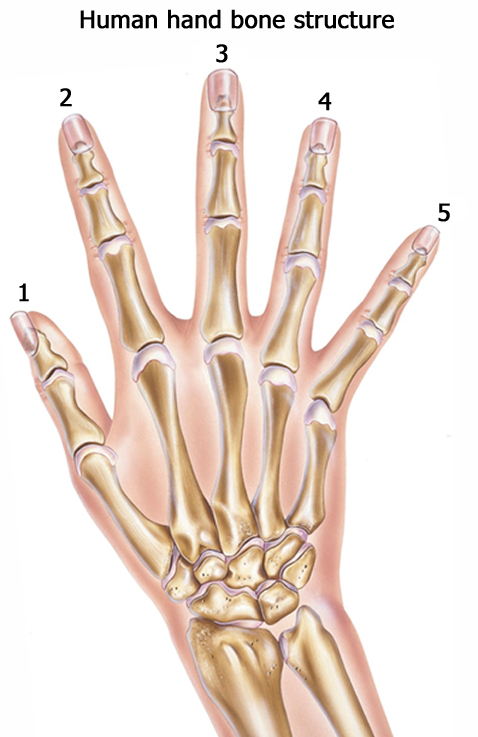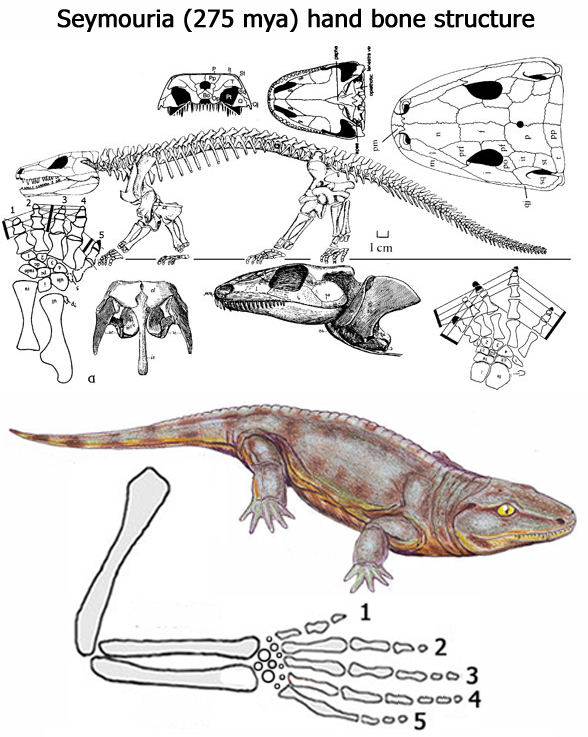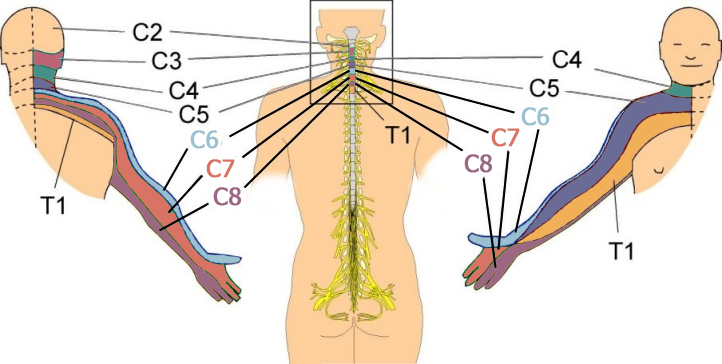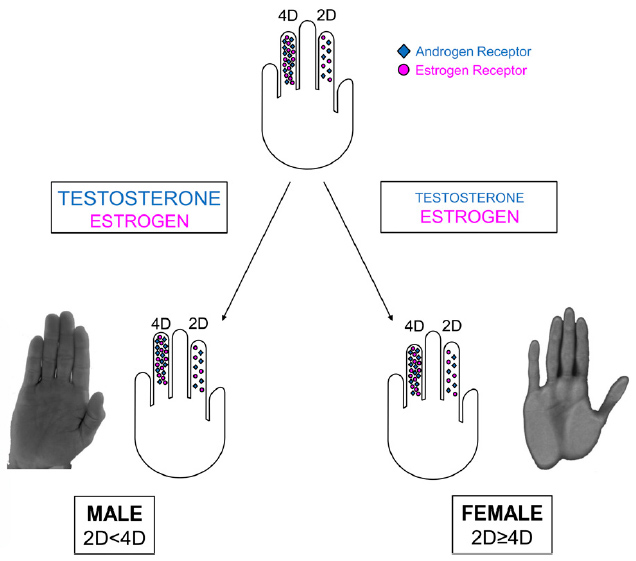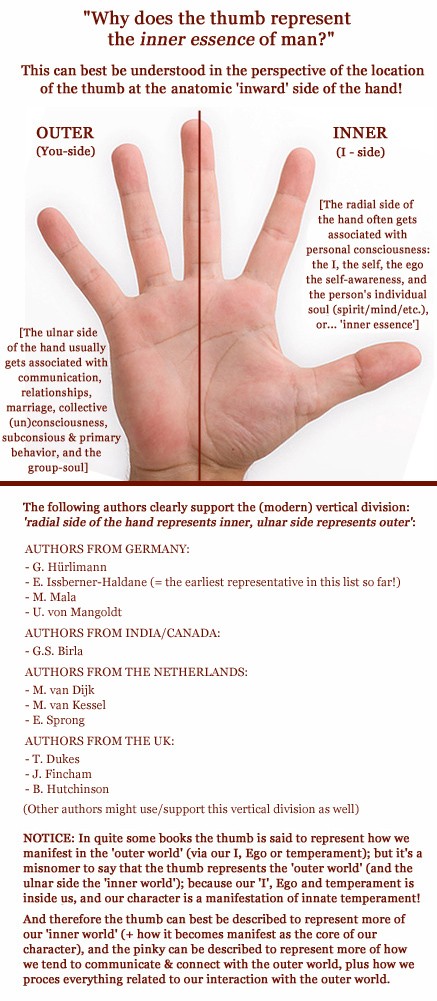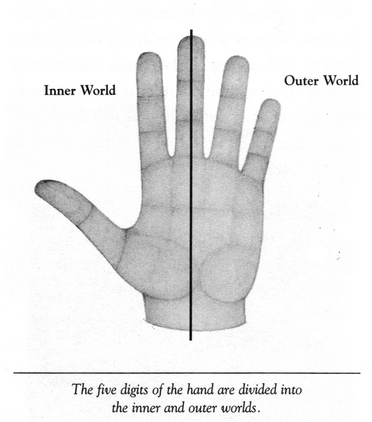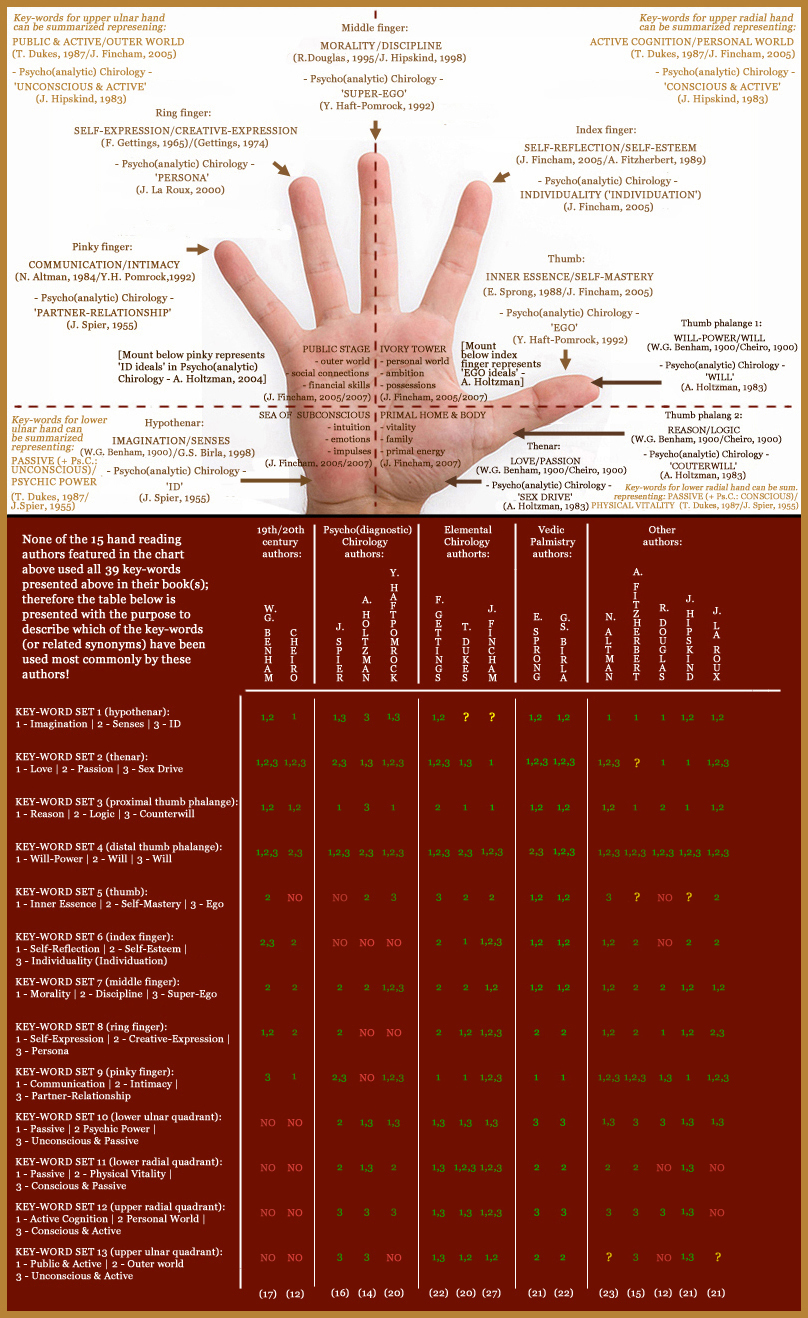|
MAY 23, 2013 'Thumb + radial fingers correlate with
|
|
The answer appears to be 'yes', because most finger length studies (e.g. various 2D:4D digit ratio studies) point out that both the thumb and radial hand show correlations with tendencies towards introversion & internalizing behavior, while the ulnar side of the hand shows a reversed tendency towards extaversion & externalizing behavior.
The fundamental explanation for these relationships can be found in anatomic structure in terms of nerves and dermatomes; the thumb & radial side of the hand is connected through higher located cervical nerves (in the spinal column) with the brain - which implicates that the ulnar side of the hand is in the spinal nerve system located more close to spinal nerve systems that regulate the heart and the other internal organs. This shows in a nutshell why your thumb is more closely connected with your brains, and why in terms of behavior your thumb is connected with your 'inner world'! |
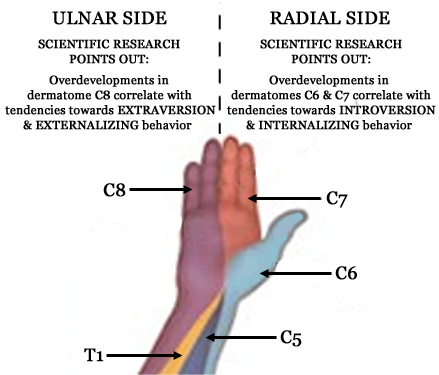
|

